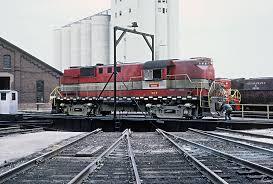
Certain disability and retirement benefits may be open to qualified Railroad employees and their spouses.
Railroad Retirement is similar to the Social Security system but legislatively and administratively different. The two systems (railroad retirement and social security) are closely coordinated regarding benefit payments, earning credits, and taxes.
Railroad Retirement offers comprehensive retirement benefits and sickness and unemployment-sickness programs for the nation's railroad workers and their families. Railroad retirement is administered by the Railroad Retirement Board (RRB), an independent body of the federal government's executive branch. The main responsibilities of the RRB are defined in the Federal Railroads Retirement and Unemployment Insurance Acts. The RRB also has administrative responsibilities under Social Security law for certain Medicare benefits and Railroad workers' coverage payments.
Basic Benefits
The Railroads Retirement Board manages the pensions/survival and unemployment/sickness of Railroad workers and their families.
It is a government/payroll system that both Union Pacific and employees pay throughout their careers and is similar to social security for non-rail industries.
When you retire, whether you have a contract or an employment contract, you may be entitled to a Railroad pension benefit from the Railroad Retirement Board.
The basic requirement of service
The basic service required for a regular employee would be ten years of creditable railroad service or five years of creditable railroad service if this service was performed after 1995. The months of service does not necessarily have to be consecutive.
Credit is given for one month of railroad service for each month in which an employee received paid service from an employer under the Railroad Retirement Act, even if only one day of service per month is performed.
How are Railroad Retirement Benefits calculated?
Railroad retirement benefits are based on months of service and earnings credit.
The earnings are credible up to a certain annual maximum on the compensation subject to the Railroad retirement taxes.
Railroad employees and employers pay a Level I tax equal to the Social Security tax. Employees and employers also pay a Level II tax, which helps fund railroad retirement benefits that go beyond social security coverage.
2021 withholding tax for employees:
Level I: 6.20% (the maximum taxable income is $142,800)
Level II: 4.90% (maximum taxable income is $106,200)
Medicare (Level III is a term used internally only by UPRR) - 1.45% (all earnings taxed) *From 2013, an employer will withhold an additional 0.9% tax on higher earnings of $200,000.
2021 withholding tax for employers:
• Level I: 6.20% (the maximum taxable income is $ 142,800)
• Level II: 13.10% (maximum taxable income is $106,200)
• Medicare: 1.45% (no income limit; an additional 0.9% applies only to employees)
What are the advantages for you?
The Railroad Retirement board website illustrates the potential benefits of both systems. Assuming the employees have similar work histories and receive maximum monthly benefits, a person retiring from the railroad would earn $ 2,700 per month. In the area of social security, this person will receive $ 1,400 per month.
If you leave the Railroad within five years of your employment, your Level I benefit will be fully transferred to the social security system. Employees with at least ten years (120 months) of credible rail service or at least five years (60 months) of credible rail service after 1995 are entitled to the rail pension and are entitled to retirement and disability pensions.
When does the Railroad Retirement Board pay a pension?
A Railroad retirement cannot be paid until the employee stops working on the Railroad and applies to begin receiving monthly rent.
Your first rail pension benefit can begin at age 60 with 30 years of qualified rail service or 62 years. If you have 30 years of rail service, you are entitled to a rail retirement pension at age 60. Otherwise, reductions in the retirement pension apply to pensions granted before full retirement age, ranging from 65 for those born before 1938 to 67 for those born in 1960 or later. You can contact a financial advisor to help you make the best decision.
Spouse Annuities
The Railroad Retirement Board generally offers a "spouse's annuity," which is paid when the spouse reaches a certain age, depending on the employee's age, date of retirement, and railroad service years.
Early retirement discounts apply to the spouse's annuity if they retire before full retirement age, which is 65 to 67, just like an employee, depending on the year of birth.
If a retired employee with 30 years of service turns 60, his or her spouse will also be entitled to a life annuity in the first full month in which the spouse turns 60.
If a retired employee with less than 30 years of service is 62 years old, his/her spouse will also be entitled to a pension for the first full month in which the spouse is 62 years old.
Estimates for employees and spouses annuity
Railroad employees can obtain estimates of future annuities for themselves and their spouses through the Railroad Pension Board.
Estimates are based on income and service records held by the Board of Directors. They indicate the earliest date the employee may receive a full annuity and, if applicable, the earliest date the employee may receive a reduced annuity.
Unemployed employees can also consult the company's annual benefits program to estimate their railroad retirement benefits at age 60 (if eligible), 62, and 65.
FOR MORE INFORMATION OR TO MAKE AN APPOINTMENT WITH ROSOVICH & ASSOCIATES, INC, PLEASE CLICK THE BLUE TAB ON THIS PAGE.
THANKS FOR VISITING.
Rosovich & Associates, Inc.